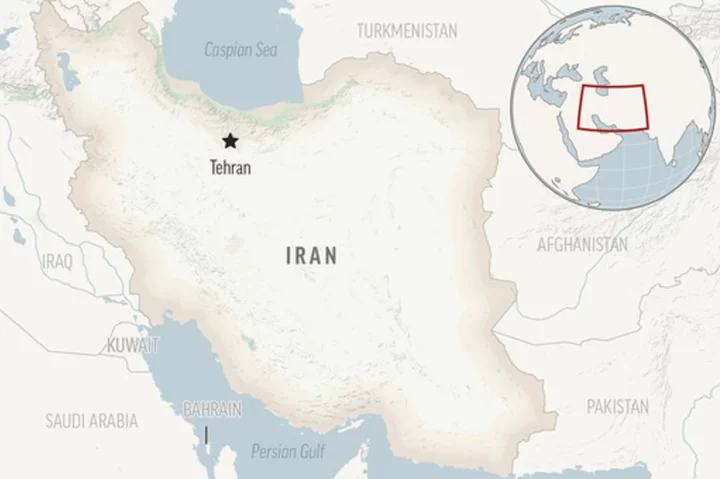By Sharon Bernstein, Rachel Nostrant and Rich McKay
Michael Shields has serviced swimming pools in the Phoenix area for years, enough time to hone a strategy for surviving the brutal heat that descends on this Arizona desert city every summer.
He typically rises at 4 a.m., covers himself in protective clothing, loads up on electrolyte drinks and drenches his hands and face in sunscreen. Ready to face the inferno, he arrives at his first customer's home well before dawn, when the temperature is already in the mid-90s Fahrenheit.
It is unsurprising to have days when the mercury climbs to well over 100 degrees Fahrenheit (38 degrees Celsius) in the summer here. But over the past two weeks, the mercury has hit 110 degrees F (43 C) or higher every afternoon, a streak of extreme temperatures that could stretch into next week, breaking Phoenix's 1974 record of 18 consecutive days, forecasters say.
The temperature looks set to hit 115 F (46 C) on Saturday and 116 (47 C) on Sunday, according to the National Weather Service.
It has been a heat wave that has given pause to many Phoenix residents, even to summer-tested veterans like Shields, who says he's been avoiding news reports about it.
"I don't look at the weather," said Shields, 67. "I can get psyched out that way."
Climate Check, a climate-focused real-estate analysis group, reported that between 1985 and 2005, Phoenix experienced about seven days a year above 109 F (43 C). By 2050, they estimated, Phoenix residents are expected to see an average of 44 days per year over that temperature.
Heat-related deaths in Phoenix’s Maricopa County have risen over the last few years, increasing from 338 in 2021 to 425 last year. So far in 2023, there have been 12 heat-related deaths, with 55 still under investigation.
As the latest heat wave progressed, emergency services workers and a government office focused on helping the city deal with the heat have distributed bottled water to homeless people and encourage them to seek shelter in several public cooling stations.
Because the region is not cooling down as much as it normally would at night, some of the cooling stations are extending their hours, said David Hondula, who directs the city's Office of Heat Response and Mitigation.
This summer, the city has nearly doubled the number of volunteers handing out water, hats and sunscreen, he said. Because the heat is worsened by a lack of shade trees, the city plans to offer grants to help people plant them.
PARK CLOSURES
Hiking trails at nearby Piestewa Peak and Camelback Mountain have been closed during the hottest hours of the day. Phoenix Parks and Recreation spokesman Adam Waltz said the temperatures on the unshaded portions of the trails can hit 130 or 140 degrees (54 or 60 C), as the sun beats down and heat rises off the earth.
Outdoor kids' sports have mostly already wrapped up due to the punishing summers, ending around June and starting up again in September, Waltz said.
Despite the trend toward more very hot days, Phoenix residents have tended to shrug off the heat, he said. They are simply accustomed to dealing with it.
But the long-term warming trend - with nights that don't cool down and asphalt and concrete that retain heat and themselves can help push up temperatures - is worrisome.
"People outside of Phoenix see 113 or 114 and gasp," Waltz said. "We usually take cover around 118 or 119. But it's very hot and dangerous."
HEAT DOME 'PARKED' OVERHEAD
The heat wave spreading across a swath of the U.S. from Oregon, down the West Coast, into the Southwest including Texas and on to Alabama is unusual said Zack Taylor, a meteorologist with the National Weather Service's Weather Prediction Center in College Park, Maryland.
There's a mass of high pressure air sitting like a dome "parked" over the affected area and deflecting any rain and storm systems that could provide relief to the 100 million people under heat warnings and cautions, said Taylor.
Phoenix is getting some of the worst of it, as the air mass is centered right over the Southwest.
"It's been anchored there for days and days," Taylor said. "This is not your typical summer heat."
After reaching 115 F (46 C) on Saturday and 116 (47 C) on Sunday temperatures are forecast to stay above 110 F (43 C) through next week, the weather service said.
Las Vegas is expected to hit 115 F on Saturday and 118 F (47 C) on Sunday; Death Valley might hit 127 (53 C) on Saturday and 130 (54 C) on Sunday, the agency said.
Outside of Phoenix in Mesa on Friday, science intern Emily Luberto covered up in long sleeves, pants and hiking boots to collect soil samples for a project studying the illness known as Valley Fever.
Her group, based at Northern Arizona University in Flagstaff, would normally get on the road at around 8 a.m., arriving in Mesa about 2-1/2 hours later. This week, they started at 6 a.m. in hopes of beating some of the heat. But by 8:30 a.m., temperatures had already surpassed 100 (38 C).
It's not just the heat coming from the sun that can be harmful. Asphalt temperatures can reach 160 degrees F (71 C) in the summer, the Arizona Humane Society wrote on its blog.
The sidewalks and streets are so hot that dog walker Cooper Burton will not take animals out after 9 a.m.
"We don't want their paws to burn," he said.
(Reporting by Sharon Bernstein, Rachel Nostrant and Rich McKay; Writing by Sharon Bernstein; Editing by Aurora Ellis and Jonathan Oatis)









